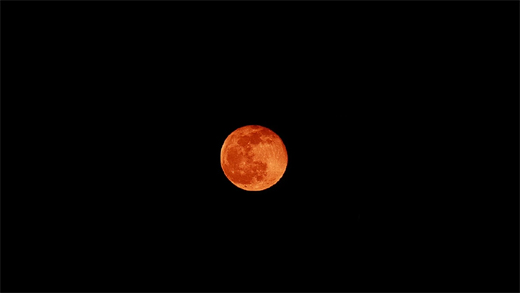
Lunar eclipse today: Time and where to watch in India
Mangalore Today News Network
New Delhi, Nov 19, 2021: An ‘almost total’ lunar eclipse will take place today on November 19, when the Moon will slip into Earth’s shadow. It will take on a reddish hue. This is also the last lunar eclipse of the year and the longest in nearly 600 years. The lunar eclipse begins at 1.02 am EST on November 19 or around 11.32 am Indian standard time and goes on till 7.04 am or around 5:34 pm IST.

According to NASA, “this is the longest partial lunar eclipse in a millennium, clocking in at 3 hours, 28 minutes and 23 seconds.” The last lunar eclipse which was longer occurred on February 18, 1440 at nearly 3 hours, 28 minutes, 46 seconds. Here’s everything to know about the partial lunar eclipse that is taking place today.
Lunar eclipse of 2021: Will it be visible from India?
Sadly, most of India will not get to view the lunar eclipse. However, those living in the northeast part of India will get to watch it. One can, however, watch the live stream of the eclipse on the YouTube channel of Lowell Observatory and timeanddate.com. India will only experience a total lunar eclipse on November 8, 2022, which is some time away.
Lunar eclipse today on November 19: Timings, is it visible in India, and everything to know
A small part of Arunachal Pradesh and Assam will get to view the eclipse, and those from Uttar Pradesh, Bihar, Jharkhand might see the end part of the eclipse as well.
According to NASA, the best viewing will be right around the peak of the eclipse at 4:03 AM EST or 2.30 pm India standard time. Given this is during the peak of the day in India, most of us will have to miss out on the eclipse.
The eclipse is visible in all of North America, large parts of South America, Polynesia, eastern Australia, and northeastern Asia, says the US space agency.
NASA is calling this one an ‘almost total lunar eclipse’ because nearly 99.1 per cent of the Moon’s disk will be within the Earth’s umbra or the darkest part of the Earth’s shadow. The lunar eclipse takes place when Sun, Earth, and Moon align into one line, but this time it is not a perfect alignment.
Just like in a total lunar eclipse, where the entire Moon is covered by Earth’s shadow and takes a bright reddish hue, the same will take place this time as well. So yes in countries where the eclipse is visible will see the Moon turn red. According to NASA, the peak of the eclipse takes place at 3.45 am EST or 2.15 pm when more than 95% of the Moon’s disk is in the umbra. This is when it will appear Red. The space agency also says that viewing with a telescope or binoculars might be easier if one wants to see the red in all its glory.
The reason the Moon turns Red is because of Rayleigh scattering, explains NASA. While blue light has a shorter wavelength, red light has a longer wavelength and can thus travel more directly through the atmosphere. Since the Earth is blocking the Sun’s path towards the Moon, sunlight has to travel through our planet’s atmosphere to reach the satellite. Only the red light is able to reach and thus the Moon takes on a reddish hue.